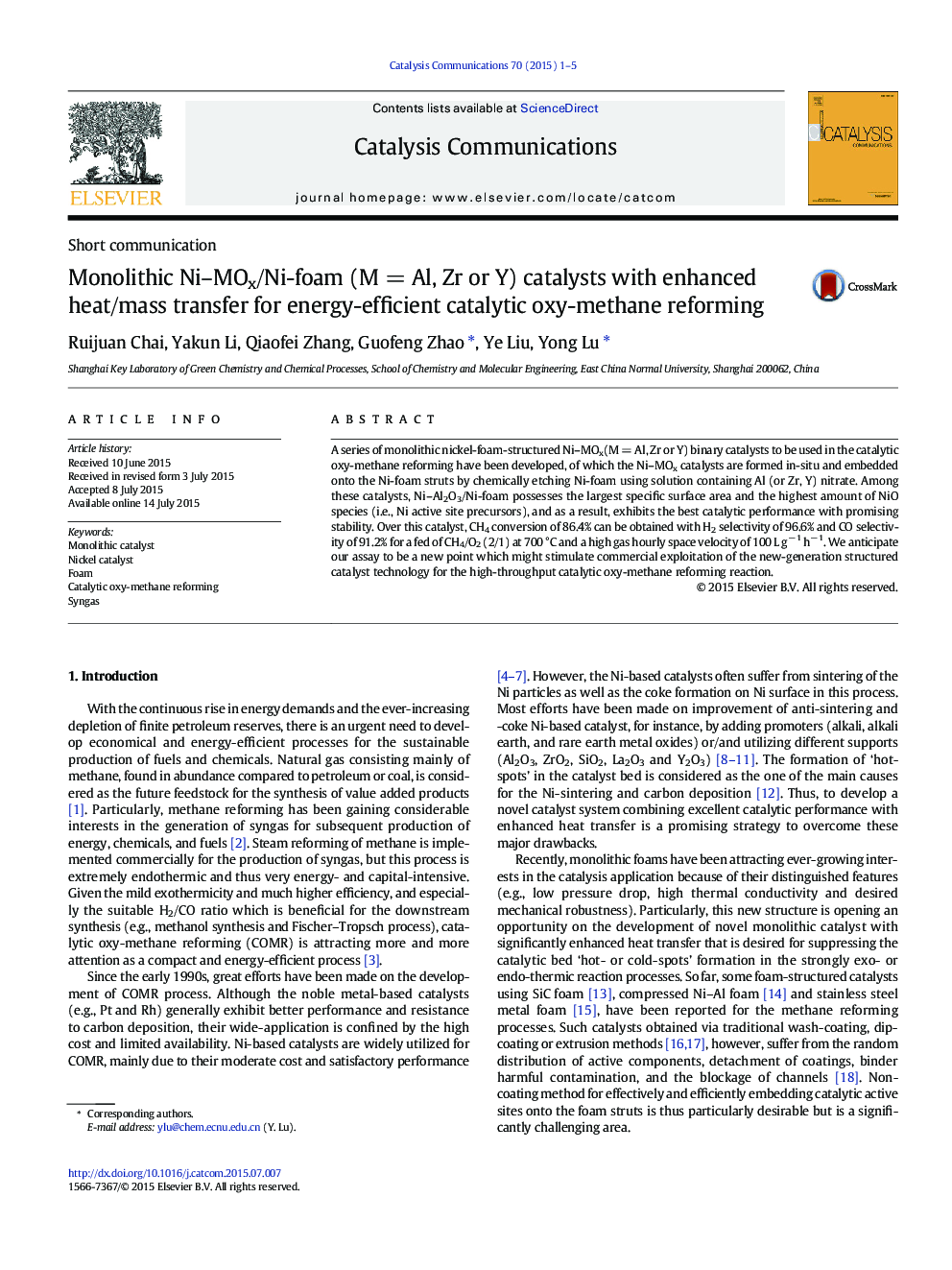| Article ID | Journal | Published Year | Pages | File Type |
|---|---|---|---|---|
| 50048 | Catalysis Communications | 2015 | 5 Pages |
•Monolithic Ni–MOx/Ni-foam catalysts with high heat/mass transfer are developed.•The foam-structured catalysts are obtained by a facile wet chemical etching method.•The catalysts are active and selective for the high-throughput COMR process.
A series of monolithic nickel-foam-structured Ni–MOx(M = Al, Zr or Y) binary catalysts to be used in the catalytic oxy-methane reforming have been developed, of which the Ni–MOx catalysts are formed in-situ and embedded onto the Ni-foam struts by chemically etching Ni-foam using solution containing Al (or Zr, Y) nitrate. Among these catalysts, Ni–Al2O3/Ni-foam possesses the largest specific surface area and the highest amount of NiO species (i.e., Ni active site precursors), and as a result, exhibits the best catalytic performance with promising stability. Over this catalyst, CH4 conversion of 86.4% can be obtained with H2 selectivity of 96.6% and CO selectivity of 91.2% for a fed of CH4/O2 (2/1) at 700 °C and a high gas hourly space velocity of 100 L g− 1 h− 1. We anticipate our assay to be a new point which might stimulate commercial exploitation of the new-generation structured catalyst technology for the high-throughput catalytic oxy-methane reforming reaction.
Graphical abstractMonolithic nickel-foam-structured binary catalysts (Ni–MOx/Ni-foam, M = Al, Zr or Y) are developed by a versatile wet chemical etching method, displaying excellent performance in catalytic oxy-methane reforming.Figure optionsDownload full-size imageDownload as PowerPoint slide
